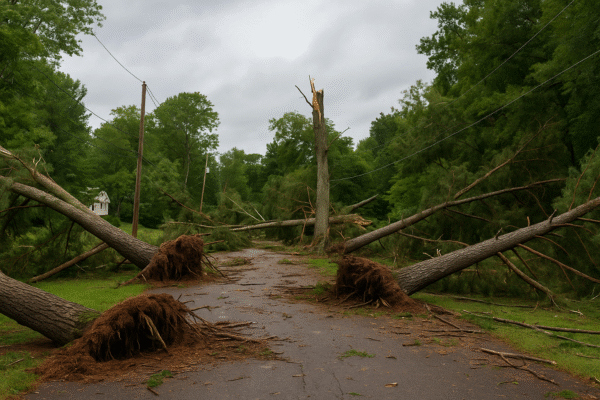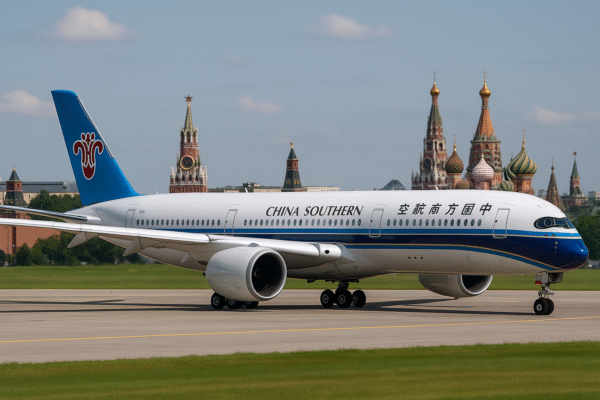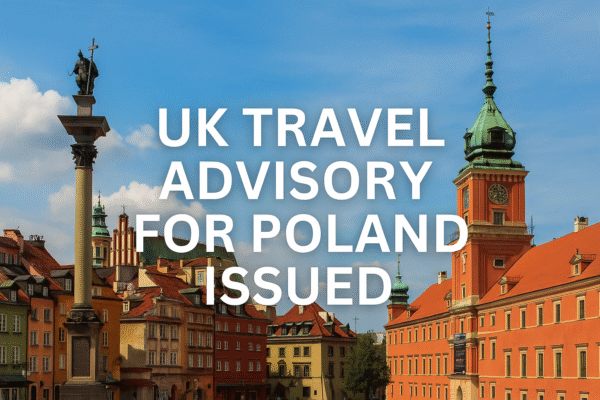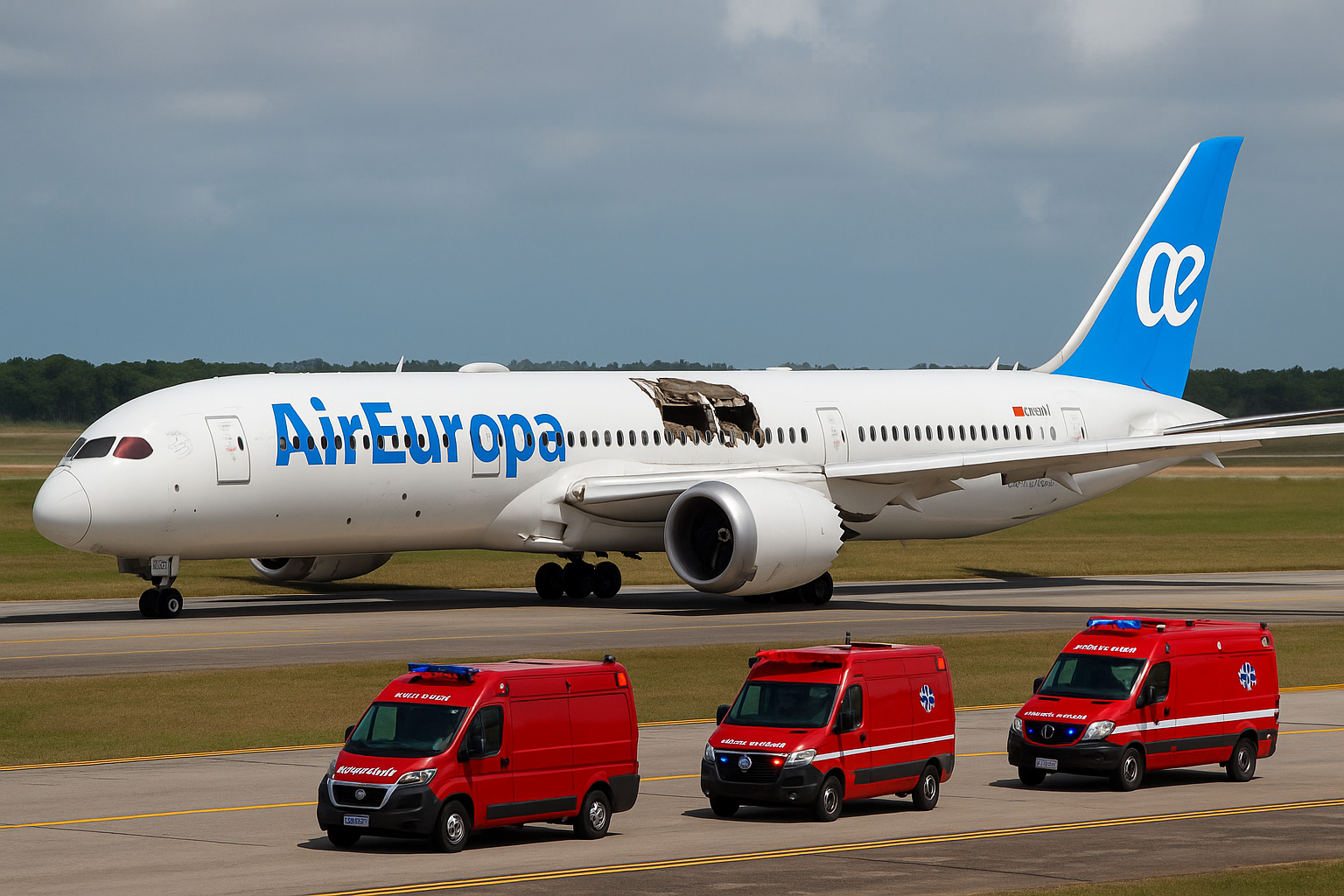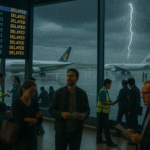Air Europa Flight Forced to Land in Brazil After Severe Turbulence Injures Dozens, Raising Global Aviation Safety Concerns
An Air Europa flight en route from Madrid, Spain, to Montevideo, Uruguay, made an emergency landing at Greater Natal International Airport (NATAL) in northeastern Brazil on Monday after being struck by extreme mid-air turbulence. The incident left at least 40 passengers injured, with 11 hospitalized in Natal, according to official statements from Brazilian health authorities and the airline.
Flight UX045, a Boeing 787-9 Dreamliner carrying 325 passengers and crew, encountered sudden and violent turbulence while cruising over the Atlantic Ocean. The aircraft diverted to Natal, where emergency responders and medical teams were waiting on the tarmac to provide urgent assistance. Several ambulances and fire units were deployed as soon as the plane landed.
Interior Damage and Passenger Trauma
Passenger-shared images from inside the aircraft revealed the extent of the chaos: ceiling panels had collapsed, and internal wiring was exposed. Loose items were flung across the cabin, and some passengers reportedly hit the ceiling due to not wearing seatbelts. Air Europa confirmed that seven people sustained serious injuries, while dozens more were treated for minor cuts, bruises, and shock.
The airline has dispatched a replacement aircraft from Madrid to resume the journey to Montevideo. Meanwhile, the damaged Dreamliner will undergo a comprehensive technical inspection in Natal before being cleared for further use.
Escalating Trend in Clear Air Turbulence (CAT)
The incident is part of a concerning global trend: an increase in clear air turbulence (CAT) — invisible turbulence that cannot be detected by radar and typically occurs at cruising altitude in clear skies. CAT is especially dangerous because it strikes without warning, catching passengers and flight crews off guard.
According to a 2023 study by researchers at the University of Reading (UK), severe CAT has increased by 55% between 1979 and 2020, with moderate turbulence up by 37%. The rise is strongly linked to climate change, which intensifies wind shear and jet stream instability, major contributors to clear air turbulence.
Not an Isolated Event: Recent Incidents Echo Concern
This latest emergency landing comes just weeks after similar turbulence-related emergencies. In May 2024, a Singapore Airlines Boeing 777 flying from London to Bangkok experienced violent turbulence that led to the death of a 73-year-old passenger and over 20 injuries, including serious spinal trauma.
Shortly after, a Qatar Airways Dreamliner from Doha to Dublin also encountered unexpected turbulence, resulting in 12 injuries, further highlighting the growing frequency of such events.
Expert Reactions and Passenger Safety Protocols
Aviation safety experts continue to emphasize that passengers must wear seatbelts at all times while seated, even when the seatbelt sign is off. “Many injuries in turbulence-related incidents are preventable with this simple measure,” said Dr. David Learmount, an independent aviation analyst.
Brazil’s National Civil Aviation Agency (ANAC) and the Federal Highway Police confirmed that emergency response protocols were executed efficiently in Natal. The Brazilian Air Force also assisted with airspace clearance for the emergency diversion.
Boeing Aircraft Under Scrutiny
While Boeing is not directly blamed for the turbulence, the damaged 787-9 Dreamliner has drawn renewed scrutiny to the manufacturer’s safety record. Boeing continues to face reputational challenges after two 737 MAX crashes in 2018 and 2019, as well as a January 2025 incident involving a detached fuselage panel on an Alaska Airlines 737 MAX.
Air Europa has confirmed it will cooperate fully with aviation regulators and investigators to determine the extent of aircraft damage and review the inflight event data.
Climate Change: A Growing Aviation Threat
The broader context behind these incidents is climate change. As atmospheric patterns become more unpredictable, turbulence events — particularly clear air turbulence — are expected to increase in both frequency and intensity. A report from the International Civil Aviation Organization (ICAO) has called for more advanced turbulence-detection systems, revised flight planning, and stronger climate-resilient aircraft designs.
Airlines are also encouraged to improve passenger safety briefings and make turbulence mitigation part of crew training refreshers, especially on long-haul transcontinental routes.
A Wake-Up Call for the Industry and Travelers
This high-profile emergency landing in Brazil acts as a wake-up call for both passengers and airlines. While aircraft are engineered to handle intense atmospheric conditions, the human factor — such as unfastened seatbelts — remains a critical vulnerability.
With climate conditions expected to grow more volatile, the aviation sector must accelerate efforts to adapt protocols, aircraft technology, and training. Simultaneously, passengers must take personal responsibility for safety by following instructions and staying secured during flights.
As investigations continue and passengers recover, the Air Europa turbulence incident over Brazil underscores an urgent message for global aviation: the skies may look calm, but the air beneath them is becoming increasingly unstable.
For more travel news like this, keep reading Global Travel Wire




